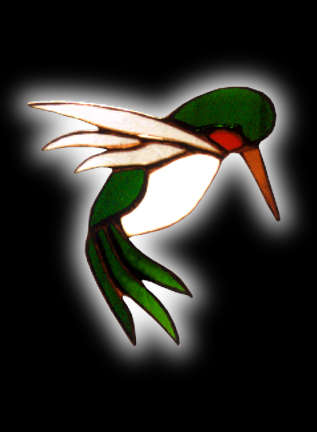Hummingbirds are small birds in the family Trochilidae. They are known for their ability to hover in mid-air by rapidly flapping their wings, 15 to 80 times per second (depending on the species). Capable of sustained hovering, the hummingbird has the ability to fly deliberately backwards or vertically, and to maintain position while drinking from flower blossoms. They are named for the characteristic hum made by their wings.
Hummingbirds are attracted to many flowering plants ~ especially those with red flowers. They feed on the nectar of these plants and are important pollinators, especially of deep-throated flowers. Most species of hummingbird also take insects, especially when feeding young.
Most male hummingbirds take no part in nesting. Most species make a neatly woven cup in a tree branch. Two white eggs are laid, which despite being the smallest of all bird eggs, are in fact large relative to the hummingbird's adult size. Incubation is typically 14-19 days.
Hummingbirds are found only in the Americas, from southern Alaska and Canada to Tierra del Fuego, including the West Indies.
With the exception of insects, hummingbirds while in flight have the highest metabolism of all animals, a necessity in order to support the rapid beating of their wings. They also typically consume more than their own weight in food each day, and to do that they have to visit hundreds of flowers daily.
Information source: Wikipedia





